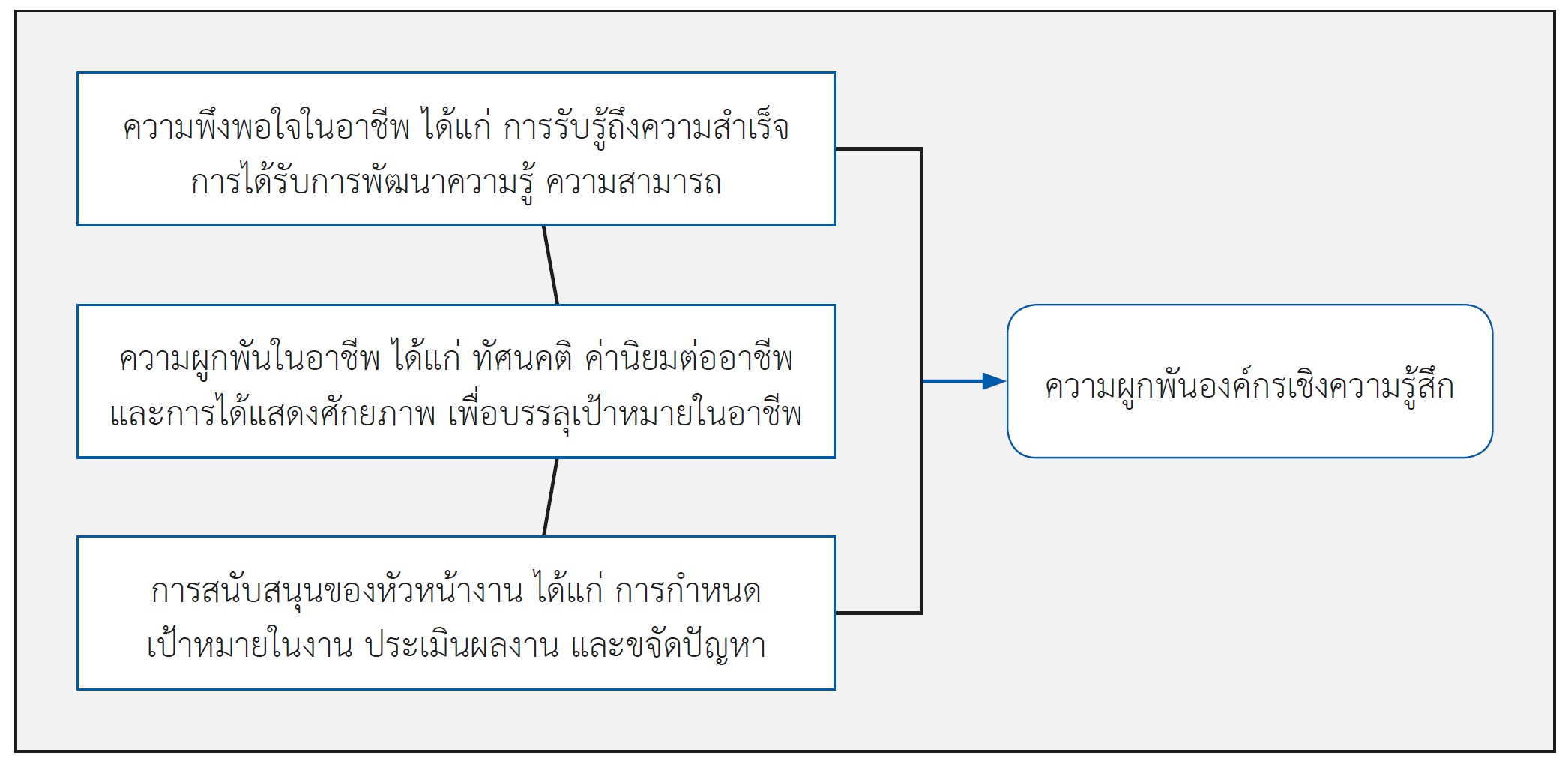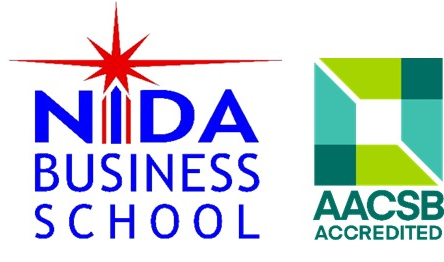Predictors of Japanese Interpreters’ Organizational Commitment
Keywords:
organizational commitment, Japanese interpreter, career satisfaction, career commitment, supervisory supportAbstract
This study aims at examining the correlation and influential relationship between career satisfaction, career commitment, supervisory support and organizational commitment based on Meyer and Allen (1991)’s organizational commitment model. The questionnaire survey was administered to both Japanese interpreters working in Japanese subsidiaries and Japanese medical department of private hospitals throughout Thailand. The results of the study indicates that interpreters’ responsibilities can be divided into major roles of translator and interpreters and minor roles of information and document administration, secretary, and customer coordinator respectively. Additionally, the study shows that career satisfaction (r. = .646, p < 0.01), career commitment, (r. = .622, p < 0.01) supervisory support (r. = .433, p < 0.01) are significantly related to organizational commitment. Furthermore, multiple regression analysis demonstrates that organizational commitment of Japanese interpreters is predicted by career commitment (β = .387, p < 0.01), supervisory support (β = .317, p < 0.01) and career satisfaction (β = .234, p < 0.05). The implication of the results to HRM practices in order to enhance organizational commitment of the Japanese interpreters are offered.
References
Allen, T.D., Eby, L.T., Poteet, M.L., Lentz, E., & Lima, L. (2004). Career benefits associated with mentoring for protégé’s: A meta-analysis. Journal of Applied Psychology, 89(1), 127-136.
Armstrong-stassen, M., & Cameron S. (2005). Factors related to the career satisfaction of older managerial and professional women. Career Development International, 10(3), 203-215.
Armstrong-Stassen, M., & Ursel, N.D. (2009). Perceived organizational support, career satisfaction, and the retention of older workers. Journal of Occupational and Organizational Psychology, 82, 201–220.
Blau, G.J. (1986). Job involvement and organizational commitment as interactive predictors of tardiness and absenteeism. Journal of Management, 12, 577-584
Blau, G.J. (1988). Further exploring the meaning measurement of career commitment. Journal of Vocation Behavior. 32, 284-297.
Cutton, J.L., & Tuttle, J.M. (1986). Employee turnover: A meta-analysis and review with implications for research. Academy of Management Review, 11(1)55-70.
D’ Amato, A., & Herzfeldt, R. (2008). Learning orientation, organizational commitment and talent retention across generations. Journal of Management Psychology, 23(8), 929-953.
Field, D.L. (2002). Taking the measure of work: a guide to validated scales for
organizational research and diagnosis. Thousand Oaks, CA: Sage.
Garces, C.V. (2015). The impact of emotional and psychological factors on public service
interpreters: Preliminary studies. Translation & Interpreting, 7(3), 90-102.
Greenhaus, J.H., Parasuraman, S., & Wormley, W.M. (1990). Effects of race on organizational
experience, job performance evaluations, and career outcomes. Academy of Management Journal, 33 (1), 64-86.
Japanese Chamber of Commerce. (2016). Survey of Business Sentiment on Japanese
Corporation in Thailand for the 1st half of 2016. Retrieved from
https://www.jetro.go.jp/thailand/e_survey/infoboard_jcc.html
Japanese Chamber of Commerce. (2017). Survey of Business Sentiment on Japanese Corporation in Thailand for the 1st half of 2017. Retrieved from https://www.jetro.go.jp/thailand/e_survey/infoboard_jcc.html.
Kittiratanaporn, A. (2015). Human resource management of Japanese companies in Thailand: A case of company importing and distributing document-related products and service from Japan. Japanese Studies Journal, 23(2), 19-25.
Klaijinda, R. (2004). The interpreters ’role in public and business sector. Master Thesis, Thammasat University, Graduate School of Journalism and Mass Communication.
Kreitner, R., Kincki, A., & Buelens, M. (2002). Organizational Behavior. England: McGraw Hill.
Marshall, L., Fischer, A., Soeller, N.A., Cordowa, R., Gutierrez, R.Y., & Afford, L.F. (2016).
Creating a professional ladder for interpreter for improvement of care. The Joint Commission Journal on Quality and Patient Safety. 42(10), 466-472.
Meyer, J.P., & Allen, N.J. (1991). A three component conceptualization of organizational commitment. Human Resource Management Review, 1(1), 64-89.
Morris, R. (2010). Image of the court Interpreter: Professional identity, role definition and self-
image. Translation and Interpreting Studies, 5 (1), 20-40.
Mowday, R.T., Steer, R.M., & Porter, L.W. (1979). The measurement of organizational
commitment. Journal of Vocational Behavior, 14, 224-247.
Munintarawong, S., & Methapisit, T. (2015). Trends in the HR development of Japanese enterprises in Thailand in the 21th century. JSN Journal, 5(2), 48-69.
Nachbagauer, A.G.M., & Riedl, G. (2002).Effects of concepts of career plateaus on performance, work satisfaction and commitment. International Journal of Manpower, 23(8), 716-733.
Nagamatsu, M. & Thirasirikul, J. (2017). The effect of person-environment fit on organization commitment in Japanese multinational corporations in Thailand. Japanese Studies Journal, 34(1), 37-36.
Nazar, O.A. (2017). Career commitment: The role of self-efficacy, career satisfaction and organizational commitment. World Journal of Entrepreneurship, Management, and Sustainable Development. Advance online publication DOI:.org/10.1108/WJEMSD-06-2017-0038.
Ng, T.W.H., Eby, L.T., Sorensen, K.L., & Feldman, D.C. (2005). Predictors of objective and
subjective career success: a meta- analysis. Personnel Psychology, 58, 367-408.
Nishikito, E. (2015). Medical interpreting services in the United States, Japan, and Thailand:
Comparisons of the teamwork between physicians and medical interpreters. JSN Journal, 5(2), 71-88.
Peuklueng, S. (2017). Factors affecting to employee retention: A case study of Japanese Interpreters. Retrieved from: http://tdc.thailis.or.th/tdc/advance.php
Poon, J.M.L. (2004). Career commitment and career success: moderating role of emotion
perception. Career Development International, 9(4), 374-390.
Porter, L.W., Crampon, W.J., & Smith, S.W. (1976). Organizational commitment and managerial turnover: A longitudinal study. Organizational Behavior and Human Performance, 15, 87-98.
Porter, L.W., Steer, R.M., Mowday, R.T., & Boulian, P.V. (1974). Organizational commitment, job satisfaction, and turnover among psychiatric technicians. Journal of Applied Psychology, 5,603-609.
Price, J.L., & Mueller, C.W. (1986). Absenteeism and turnover among hospital employees. Greenwich,CT:JAI Press.
Rodlamai, C. (2017). The Study of relationship between techniques of Japanese human resource management and career satisfaction of Thai employees; A case study of Japanese subsidiaries in Bangkok and surrounding area. Master thesis, Thai- Nichi Institute of Technology, Graduate School of Business Administration.
Samngamya, C. (2013). A Study of the factor impact to communication efficiency between Thai people officer and Japanese executive. Master thesis, Burapha University, Graduate School of Logistics.
Seibert, S.E., Crant, J.M., & Kraimer, M.L. (1999). Proactive personality and career success.
Journal of Applied Psychology, 84(3), 416-427.
Sekaran, U. (2003). Research Method for Business: A skill building Approach. NY: Wiley &
Sons.
Surapongbandit, S. (2006).The satisfaction of Japanese customers toward Japanese interpreter service, Bumrungrad international hospital. Master thesis, Kasetsart University, Graduate School of Social Science.
Tymon, W.G.Jr., Stumpf, S.A., & Smith, R.R. (2011). Manager support predicts turnover of professionals in India. Career Development International, 16(3), 293-312.
Vandenberg, R.J., & Scalpels, V. (1994). A longitudinal assessment of the determinant relationship
between employee commitment to the occupation and organization. Journal of Organizational Behavior, 15(6), 535-547. Abstract retrieved from https://doi.org/10.1002/job.4030150605
Wallace, J.E. (1993). Professional and organizational commitment: Compatible or incompatible.
Journal of Vocational Behavior, 42,333-349.
Wallace, J.E. (2001). The benefits of mentoring for female lawyers. Journal of Vocational
Behavior, 58(3), 366-391.
Wickramasinghe, V., & Jayaweera, M. (2010). Impact of career plateau and supervisory support
on career satisfaction: A study in offshore outsourced IT firms in Sri Lanka. Career Development International, 15(6), 544-561.
Yahya, K.K., & Tan, F.Y. (2015). Enhancing career commitment: The influence of human resource management practices. International Journal of Business & Society, 16(2), 237-246.
Yap, M., Holmes, M.R., Hannah, C.A., & Cukier, W. (2010).The relationship between diversity training, organizational commitment, and career satisfaction. Journal of European Industrial Training, 34(6), 519-538.
Zhong, W., & Chin, T. (2015). The role of translation in cross-cultural knowledge transfer within a MNE’s business networks: A 3D-hierachial model in China. Chinese Management Studies, 9 (4), 589-610.

Downloads
Published
How to Cite
Issue
Section
License
Copyright (c) 2020 https://creativecommons.org/licenses/by-nc-nd/4.0/

This work is licensed under a Creative Commons Attribution-NonCommercial-NoDerivatives 4.0 International License.



